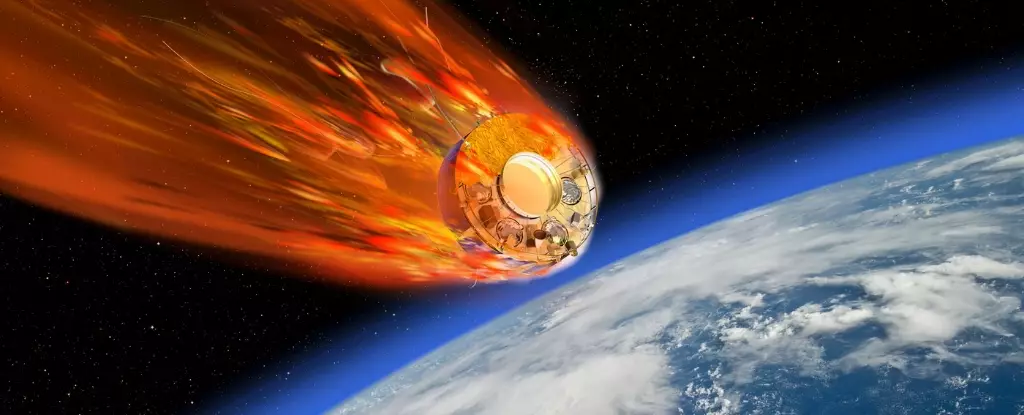The exploration of Venus serves as a striking chapter in the tumultuous narrative of the Cold War era, symbolizing not just the scientific ambition of a nation but a competitive spirit that characterized the geopolitical landscape. During the 1960s and 1970s, the Soviet Union embarked on an ambitious project, launching a total of 29 spacecraft toward the “infernal” world of Venus, which was often touted as Earth’s “twin sister.” But these missions were more than mere scientific pursuits; they were emblematic of a larger struggle for superiority within the realm of space exploration.
The Harsh Reality of Venus: A Scientific Battleground
What makes Venus particularly interesting—aside from its nickname as Earth’s twin—is its extreme climate, a scorching environment layered in dense clouds that trap heat at terrifying levels. The scarcity of oxygen and the oppressive atmospheric pressure make Venus an inhospitable locale, and yet, it became a focal point for Soviet ambitions. With missions like Venera 7 successfully achieving the first soft landing on the planet in 1970, it was clear that Soviet scientists were not just aiming to demonstrate technological prowess; they were in a race against time to unveil the mysteries of a planet shrouded in smog and mystery.
The Venera missions often relied on dual spacecraft launches, improving the odds of success. This strategic pairing meant that if one spacecraft faltered, the other might prevail, showcasing the Soviets’ adaptive planning capabilities. The tales of these missions, filled with both astounding achievements and crushing failures, portray a dramatic narrative of human ingenuity frequently overshadowed by the political climate of the time.
The Abandoned Challenger: Kosmos 482
Among the 29 launched spacecraft, Kosmos 482’s story stands out as a poignant reminder of ambition frequently derailed. Launched alongside Venera 8 in 1972, its fate was tragically mishandled: a misconfigured timer caused the upper stage of the rocket to shut down prematurely, resulting in a failure to escape Earth’s orbit. Rather than join its sibling in unveiling the harsh realities of the Venusian surface, Kosmos 482 instead became a spaceborne ghost—a relic drifting in Earth’s orbit and a symbol of unfulfilled aspirations.
What makes Kosmos 482 particularly fascinating is its possible re-entry to Earth, an event predicted to occur soon. Many speculate that, unlike typical space debris that burns upon re-entry, this probe might withstand the intense heat due to its robust titanium structure designed for Venus’s infernal conditions. This impending return raises various questions about human intervention in the cosmos and our responsibility toward the objects we send into space.
The Cinematic Reflection of a Technological Era
Pop culture has not shied away from the dramatic tableau that space exploration has painted. Films like “The Silent Star” and “Night of the Living Dead” channeled Cold War anxieties and fed public fears about the unknown. Through science fiction narratives, these cultural phenomena depicted an ominous portrayal of extraterrestrial life forms and the potential perils posed by space exploration. Such representations reflect a society grappling with its fears during an age marked by nuclear tension, showcasing how art and reality often intertwine in the realm of human imagination.
The Growing Threat of Space Debris
Fast forward to today, the conversations surrounding space exploration have evolved, and new anxieties have emerged dominantly focused on the growing problem of space debris. In the last few years, we have witnessed a surge in rocket launches and an influx of satellites cluttering low Earth orbit. It is now estimated that satellite failures and other orbital debris significantly contribute to atmospheric pollution when they burn upon reentry.
In light of this, the Kosmos 482 re-entry offers both intrigue and concern: a debate over what constitutes “space junk.” While many may view the remnants of past space missions, like Kosmos 482, as mere debris, they also represent the eerie nexus between human achievement and environmental responsibility in the cosmos. This binary ponderance reveals the ongoing dilemma humanity faces: how to balance our unquenchable thirst for discovery with the environmental consequences of our actions.
The Blossoming Relationship with Venus
Today, as we peer into the cosmic depths, our understanding of Venus continues to evolve. And while it may remain the “planet of love” in cultural lore, it is also perceived now as a mysterious world ripe for exploration. Once seen through the prism of Cold War rivalry, the narrative surrounding Venus is transforming into one of collaboration and shared planetary stewardship, reflecting humankind’s broader aspiration to embrace both the beauty and the challenges of our universe.
As we await Kosmos 482’s reentry, we find ourselves reflecting on the intricate tapestry of history, emotion, and aspiration that binds us to the stars, urging us to consider not only what lies within our grasp but also the responsibility associated with reaching beyond it.


Leave a Reply